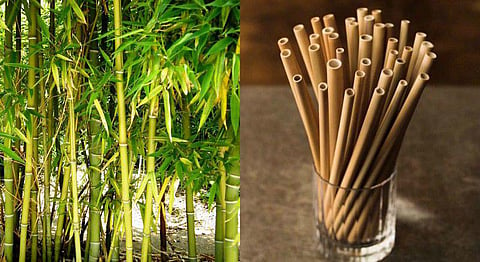
- HOMEGROWN WORLD
- #HGCREATORS
- #HGEXPLORE
- #HGVOICES
- #HGSHOP
- CAREERS
- ABOUT US
- CONTACT US

Given Maharashtra’s recent plastic ban and the crackdown on single use plastics across the country, restaurants and fast food outlets have taken to removing plastic straws from their inventory, opting to use paper straws instead. While the move towards paper straws is an improvement, these are also single-use, and can be inconvenient, and ultimately, wasteful. However, a new innovation by Dr. Lal Ji Singh of the Botanical Survey Of India (BSI) could be a viable replacement for paper straws – reusable and biodegradable bamboo straws.
The straws are made from a species of bamboo native to the Andaman and Nicobar islands, schizostachyum andamanicum, that was discovered about twenty years ago and is characterized by a thin hollow stem and long internodes. Work on creating the straws has been ongoing at Dhanikhari Experimental Garden-cum-Arboretum, at the BSI Regional Centre, since 2011.
Though the bamboo cannot be used as a straw in its natural state, a few simple modifications make it an ideal reusable straw. The straw is formed by cutting sections of the bamboo stem to the required length and removing the outer sheath and solid nodes of the bamboo. Dr. Singh patented the straw and tested it out by handing out 5,000 of the reusable straws at the World Environment Day celebrations held in New Delhi in June.
“If the per capita consumption of plastic has to be brought down, it can be done by promoting natural products like bamboo and jute and other such innovations,” said Dr. Singh in an interview with The Hindu.
The procedure for making these straws is incredibly easy, and can be done manually or by machine. Additionally, the bamboo species required to make the straw grows abundantly on the island and can be easily cultivated by farmers. Thus, these straws cost 50 paise per piece to manufacture, making them far cheaper and more cost-effective replacements for plastic straws than paper straws, which cost about 10 times more than plastic. Additionally, these straws are biodegradable and will generate less waste when eventually disposed of. This is a tremendous achievement in our move towards being a more sustainable society and we eagerly await the integration of these straws into our daily lives.
If you enjoyed this article, we suggest you read:
